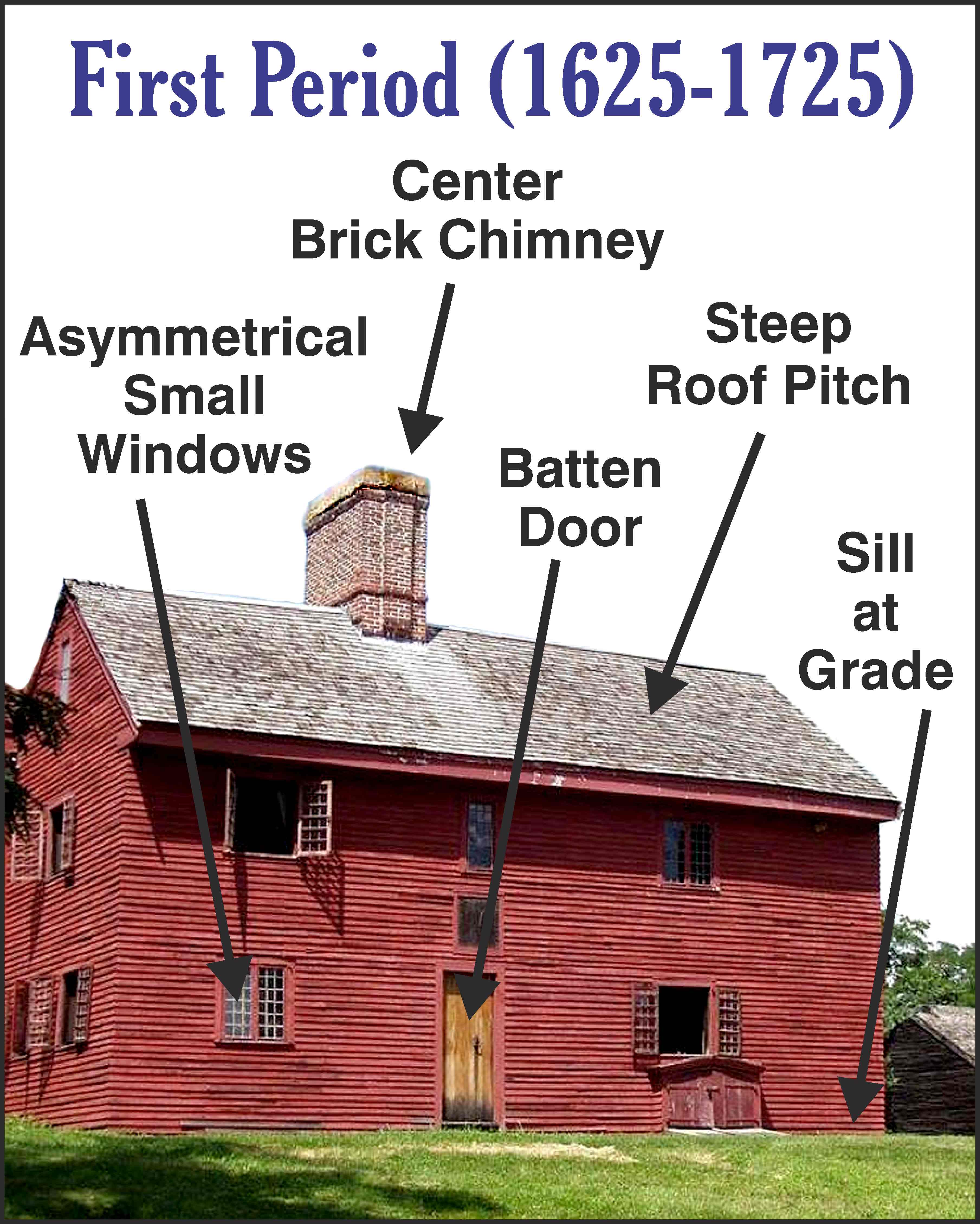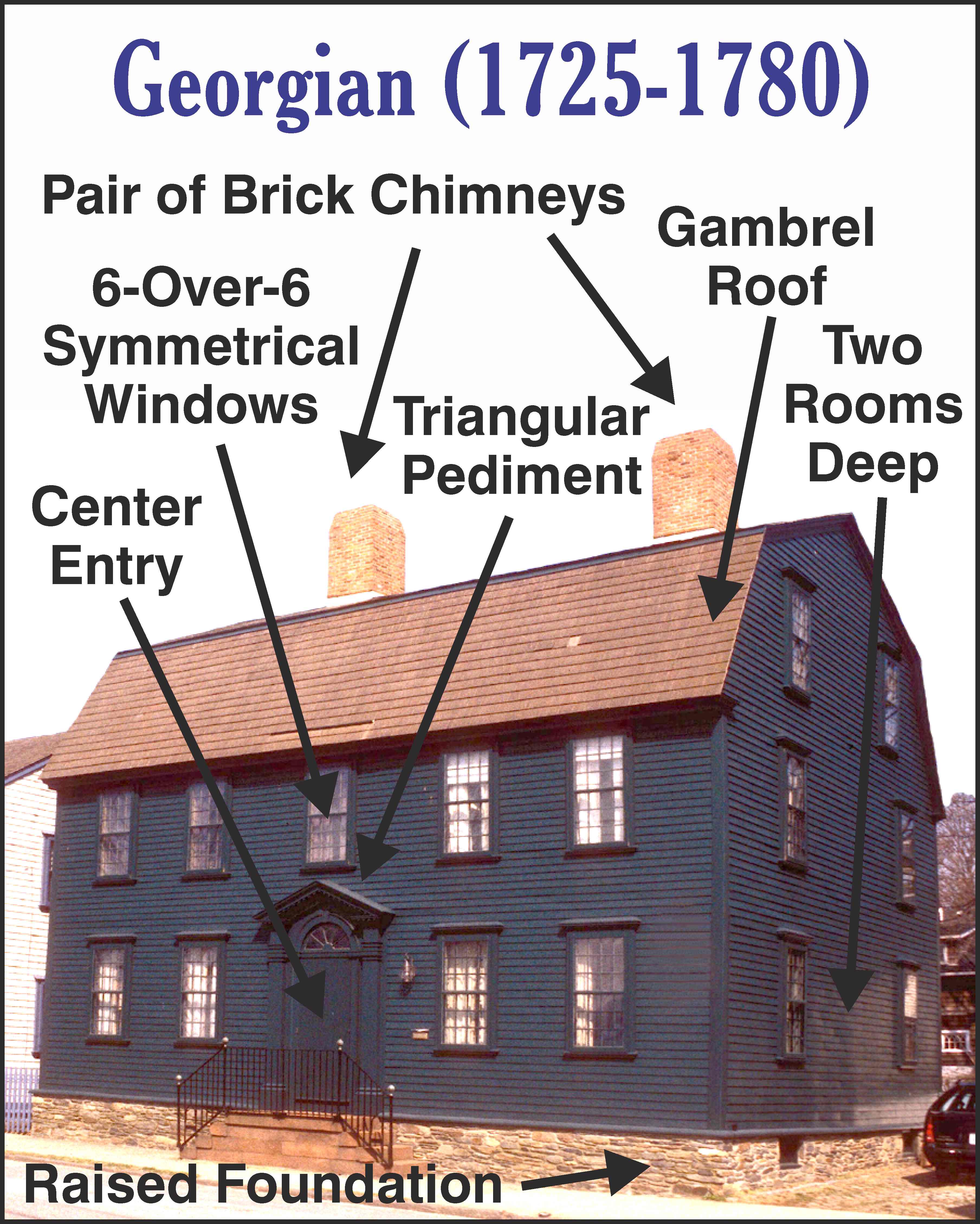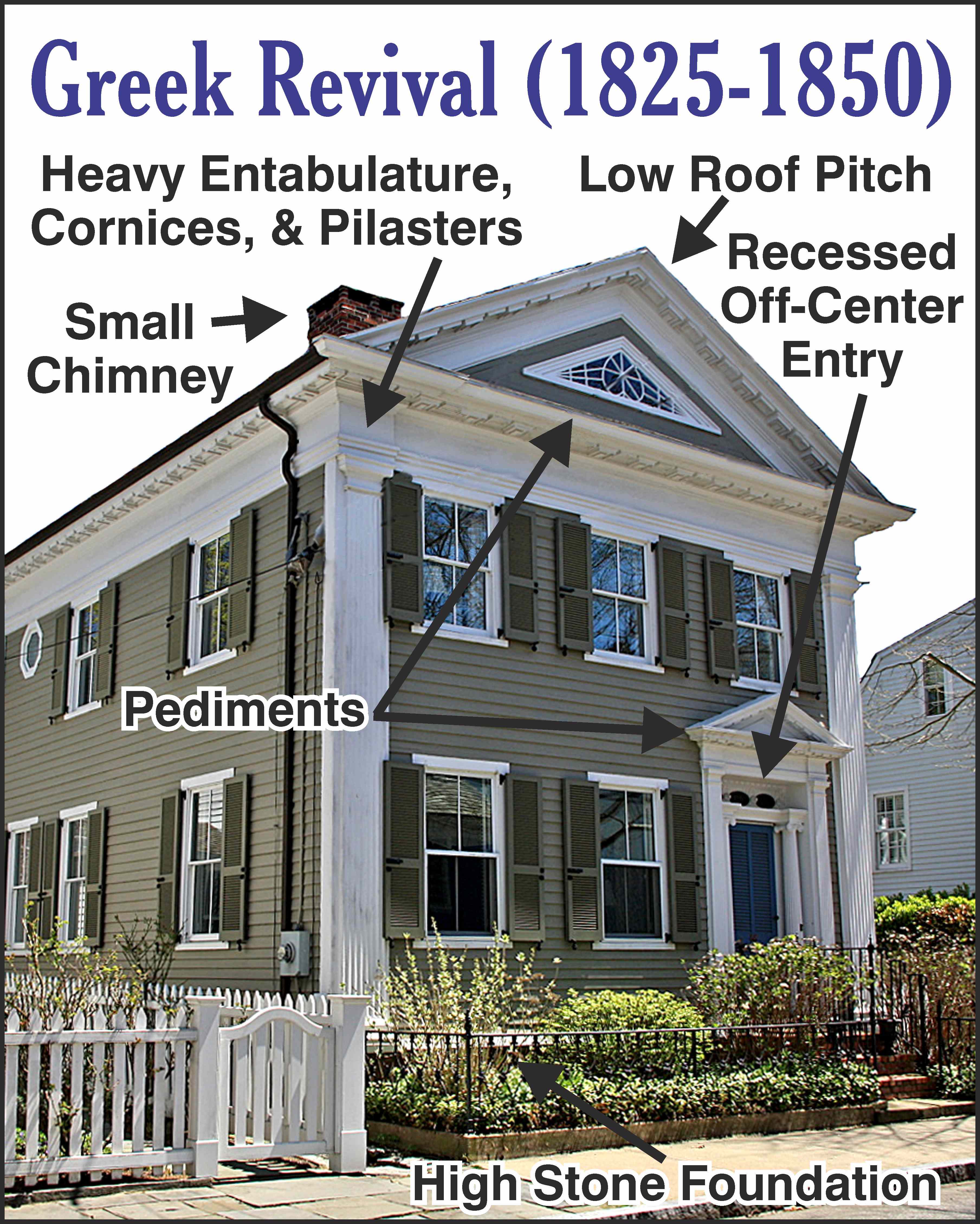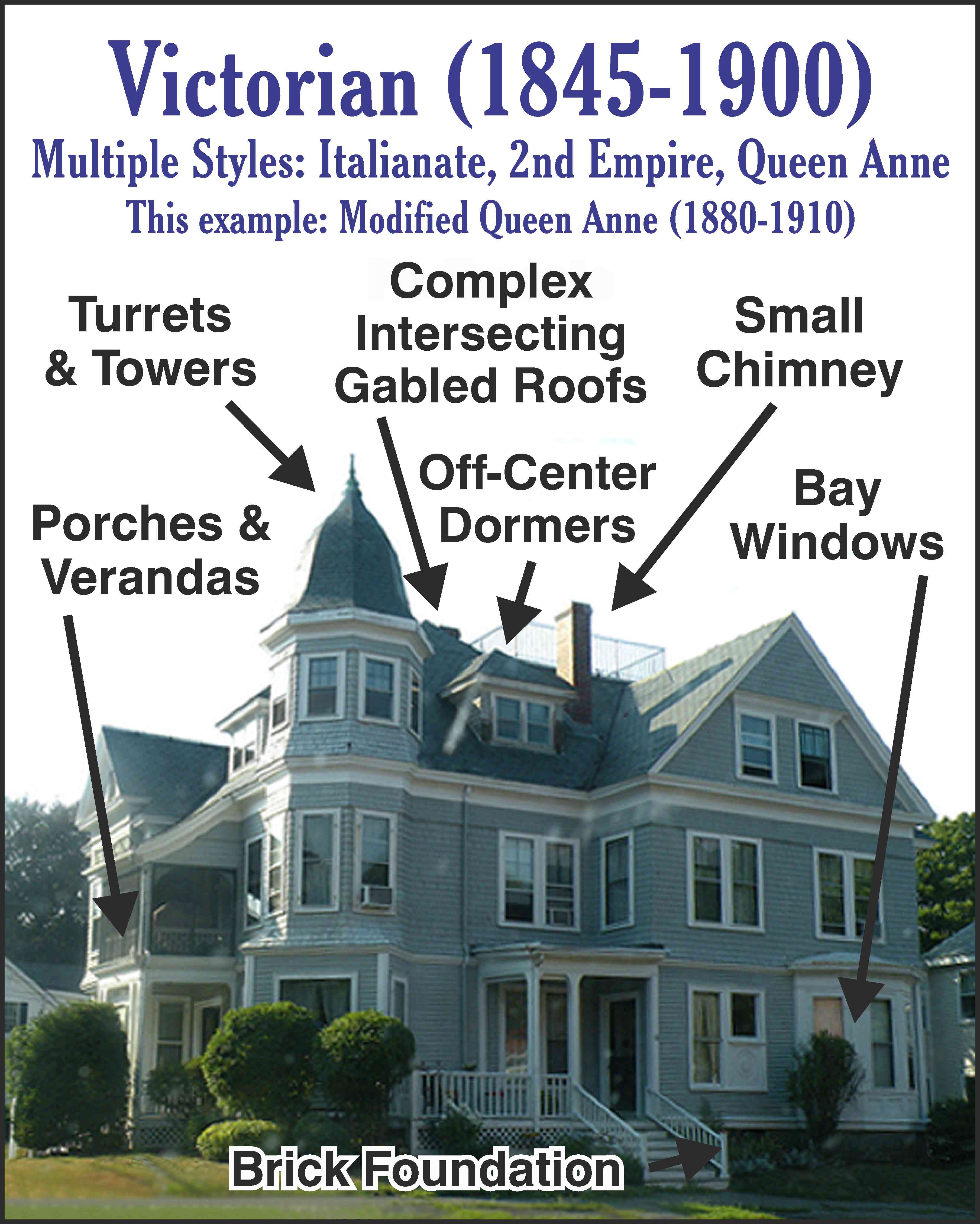-
-
-
-
-
-
-
-
-
-
-
NEWBURYPORT ARCHITECTURE
-
-
-
-
-
-
-
-

Newburyport: A Showplace
of Early American Domestic Architecture
 Through the happy combination of circumstance and vision, Newburyport has come to be known for its uncommonly rich stock of early American domestic architecture in First Period, Georgian, Federal, and Greek Revival styles. To a lesser degree, also found in Newburyport are fine examples of late 19th- and early 20th-century styles from Victorian and Shingle style (19th century) to Arts & Crafts, Tudor, Colonial Revival, and American Four-Square (20th century). This page provides an introduction to the styles most commonly found in Newburyport that draw people here from far-and-wide to visit and/or make their home.
Through the happy combination of circumstance and vision, Newburyport has come to be known for its uncommonly rich stock of early American domestic architecture in First Period, Georgian, Federal, and Greek Revival styles. To a lesser degree, also found in Newburyport are fine examples of late 19th- and early 20th-century styles from Victorian and Shingle style (19th century) to Arts & Crafts, Tudor, Colonial Revival, and American Four-Square (20th century). This page provides an introduction to the styles most commonly found in Newburyport that draw people here from far-and-wide to visit and/or make their home.
First Period (1625-1725)
The first permanent homes that early English settlers built in New England between 1625-1725 have come to be known as "First Period" houses. Characteristics of this post-medieval style adapted from building practices in England's southeastern and central counties, include a steeply-pitched roofline, a thick central chimney, and, in the earliest examples, asymmetrically-placed diamond-pane casement windows. (Sliding sash windows with multiple rectangular panes came into use about 1700.)

The interior of a typical First Period house was generally one-room deep. Stairs to the second floor formed an "L" or "U" shape around the central chimney. Expansion of these post-and-beam structures took the form of lean-to additions.
There are few surviving First Period homes in New England that retain original features or fabric. The post-and-beam frames were built to last, however, and in Newburyport, and especially Newbury, there are several fine examples. (Two Historic New England First Period house museums, the Coffin House (1678) and the Swett-Ilsley House (1677) on High Road just into Newbury, are open for public tours on selected dates. Consult the Historic New England web site for the seasonal schedule at www.HistoricNewEngland.org.)
Georgian (1725-1780)
The Georgian style of colonial era house in New England is so-named because of its period of vogue during the 18th-century reign of England's succession of kings named ... George.

The style was based on Italian architect Andrea Palladio's (1508-1580) interpretation of classical design principles, which were adapted by early English architects and published in pattern books for tradesmen. These publications led to a kind of standardization of house-building among tradesmen. In New England the style was carried out as a simple, symmetrical, two-story, two-room deep house with a center entry and its windows aligned horizontally and vertically. The house was set on a raised foundation, and a gambrel or gable roof was common. In later examples, chimneys were set at each end of the house instead of one at the center. The paneled front door was usually capped with a decorative crown, supported on the sides by decorative pilasters.
The "high-style" Georgian house in New England was a sign of status and wealth. In Newburyport there are examples of the "high-style", such as the Dalton House (1747) at 95 State Street, but there are far more examples of Georgian style homes that have comparatively modest decorative embellishments.
Federal (1780-1830)
 The Federal style of domestic architecture, so-named because it flowered during our country's founding decades, refined the Georgian style by introducing cleaner lines and more delicate decorative features. In common with the Georgian style, the Federal house was/is a two-room deep rectangular box, with a raised foundation, a center door, and symmetrical five-bay window placement. Sometimes referred to as the "Adam" style, after the published designs (1792) of English architect Robert Adam (1728-1792), the Federal style is associated with a number of notable American architects and craftsmen of the era: Charles Bulfinch (1763-1844), Asher Benjamin (1773-1845), Samuel McIntire (1757-1811), and Benjamin Latrobe (1764-1820). Their work and publications made them stylistic tastemakers of their time. The Federal style house is distinguished by its low-hipped roof and three levels of windows that are successively smaller, with the smallest windows on the low-ceiling third-floor. Fanlights are common over the front entry. Chimneys were generally in spaced pairs, with a staircase located in the center of the house.
The Federal style of domestic architecture, so-named because it flowered during our country's founding decades, refined the Georgian style by introducing cleaner lines and more delicate decorative features. In common with the Georgian style, the Federal house was/is a two-room deep rectangular box, with a raised foundation, a center door, and symmetrical five-bay window placement. Sometimes referred to as the "Adam" style, after the published designs (1792) of English architect Robert Adam (1728-1792), the Federal style is associated with a number of notable American architects and craftsmen of the era: Charles Bulfinch (1763-1844), Asher Benjamin (1773-1845), Samuel McIntire (1757-1811), and Benjamin Latrobe (1764-1820). Their work and publications made them stylistic tastemakers of their time. The Federal style house is distinguished by its low-hipped roof and three levels of windows that are successively smaller, with the smallest windows on the low-ceiling third-floor. Fanlights are common over the front entry. Chimneys were generally in spaced pairs, with a staircase located in the center of the house.
Newburyport, which experienced its greatest period of prosperity coincident with the c. 1800 "Federal" period, is flush with examples of the Federal style, both in brick and clapboard exterior, from the high-style decorated mansions of High Street, Fruit Street, State Street, and Green Street to the modest unadorned tradesmen's homes of the South End and North End neighborhoods.
Greek Revival (1825-1850)
 In 1818, architect Benjamin Latrobe's (1764-1820) design of the new Bank of the United States in Philadelphia, based on the look of the Parthenon in Athens, set the tone for public buildings in our young country. This is often cited as the first Greek Revival building in the U.S. Our newest American architects popularized the style in their published pattern books, particularly Asher Benjamin (1773-1845) in his The Practical House Carpenter (1830). An adaptation of the style for domestic architecture was introduced in New England that included Grecian-themed moldings and columns on a gable-front wood-frame house.
In 1818, architect Benjamin Latrobe's (1764-1820) design of the new Bank of the United States in Philadelphia, based on the look of the Parthenon in Athens, set the tone for public buildings in our young country. This is often cited as the first Greek Revival building in the U.S. Our newest American architects popularized the style in their published pattern books, particularly Asher Benjamin (1773-1845) in his The Practical House Carpenter (1830). An adaptation of the style for domestic architecture was introduced in New England that included Grecian-themed moldings and columns on a gable-front wood-frame house.
Newburyport is rich with Greek Revival domestic architecture. In addition to dozens of examples in the neighborhoods, the city has a fine formal example in granite in its 1835 Custom House (now the Custom House Maritime Museum at 25 Water Street), designed by Robert Mills (1781-1855), architect of the Washington Monument.
Victorian (1845-1900)
 The Victorian category of domestic architecture encompasses a number of elaborately ornamented building styles that came into fashion during the reign (1845-1901) of England's Queen Victoria (1819-1901). In Newburyport, the most common Victorian styles are Italianate (1845-1885), Second Empire (1855-1885), and Queen Anne (1880-1910). The Italianate style was inspired by informal Italian villas and their square towers. The French-derived Second Empire style is characterized and easily identified by its mansard roof. The Queen Anne style (in the example at right) was an amalgam of a variety of influences, but is most characterized by its asymmetry and its round corner tower. Noted American architect Henry Hobson Richardson (1838-1886) is credited with designing the first Queen Anne home in the U.S. (1874). The Philadelphia Exposition (1876) drew attention to the new style, and soon builders could consult newly-published plan books and order mass-produced building materials.
The Victorian category of domestic architecture encompasses a number of elaborately ornamented building styles that came into fashion during the reign (1845-1901) of England's Queen Victoria (1819-1901). In Newburyport, the most common Victorian styles are Italianate (1845-1885), Second Empire (1855-1885), and Queen Anne (1880-1910). The Italianate style was inspired by informal Italian villas and their square towers. The French-derived Second Empire style is characterized and easily identified by its mansard roof. The Queen Anne style (in the example at right) was an amalgam of a variety of influences, but is most characterized by its asymmetry and its round corner tower. Noted American architect Henry Hobson Richardson (1838-1886) is credited with designing the first Queen Anne home in the U.S. (1874). The Philadelphia Exposition (1876) drew attention to the new style, and soon builders could consult newly-published plan books and order mass-produced building materials.
In Newburyport in the mid- and late-19th century, there was a growing menu of stylistic choices for those who could afford to build a new home. The three aforementioned Victorian styles, as well as some examples of Stick (1860-1890) and Shingle (1880-1900) style homes can be found in Newburyport.
- R.W. Bacon (text & graphics), for the Newburyport Preservation Trust (2012)
A Gallery of Newburyport Architecture
A Gallery of Public Architecture is a viewable, downloadable, and printable single-page PDF file featuring notable public buildings in Newburyport, past and present. The photos are from pre-1923 public domain colorized postcard images.
A Gallery of Newburyport Homes is a viewable, downloadable, and printable two-page PDF file featuring photographs of notable Newburyport homes included in Albert Hale's Old Homes of Newburyport (1912). (See the link below to download the entire book from the Internet Archive.)
Architecture-Related Links of Interest
Architecture-related links of interest, including organizations, databases, web sites, and books/publications, can also be found on our Preservation Resources page. Links most directly relevant to the topic are below. For those researching specific houses or neighborhoods, don't forget to consult the links to Newburyport historic maps below.
Historic New England's Architectural Style Guide. The Historic New England web site includes this guide as an introduction to American domestic architectural styles. Styles covered begin with First Period colonial architecture and proceed through the Colonial Revival architecture of the early twentieth century. The guide focuses on the common styles found in New England, and therefore does not include every style of American domestic architecture.
Three Self-Guided Residential Walking Tours, with an Overview of Common Styles, Local History, and Significant Public Buildings (2011), by the Newburyport Preservation Trust. Enthusiasts of Newburyport architecture need this book! Purchase your own copy from the Newburyport Preservation Trust online here or from your favorite local bookseller.
The Inventory of the Newburyport National Register Historic District. Essential reference for those investigating house history or architectural evolution of specific properties, this site holds a selection of individual property data sheets compiled in 1984 for Newburyport's National Historic District inventory. Streets are listed alphabetically, with properties listed in numerical order by address. (N.B.: Not all data sheets are shown. Hard copy binders of all data sheets and photos can be viewed at the Newburyport Public Library Archival Center.) The web site includes data sheets on special districts within the National Register District: Chestnut Street Victorian Residential District, Fruit Street Historic District, High Street Historic District, Joppa Historic District, Merrimac Street Shipbuilding District, Ocean Mills Historic District, Pleasant Street Industrial District, South End Historic District, and Washington Street Historic District.
Old Newburyport Houses, by Albert Hale (1912). This 150-page book is packed with photos of houses and architectural features. (The link is to a readable and downloadable PDF file at the Internet Archive.)
White Pine Monograph on Old Homes of Newburyport, Massachusetts, by Richard Arnold Fisher (1917). This 32-page booklet was published by the White Pine Bureau of St. Paul, Minn. (The link is to a readable or downloadable PDF file at the Internet Archive.)
Newburyport Historic Maps
For those researching the history of Newburyport houses and neighborhoods, maps of the past offer valuable context to augment information found in the written records. Go to our Newburyport Historic Maps page for links to maps of Newbury (1640 & 1700) and Newburyport (1871, 1872, 1880, 1884, 1891, 1900, 1904, and 1909. The early Newbury maps are downloadable; the later Newburyport maps can be viewed online in great detail. Some of the maps viewable on a commercial web site are also available for purchase.